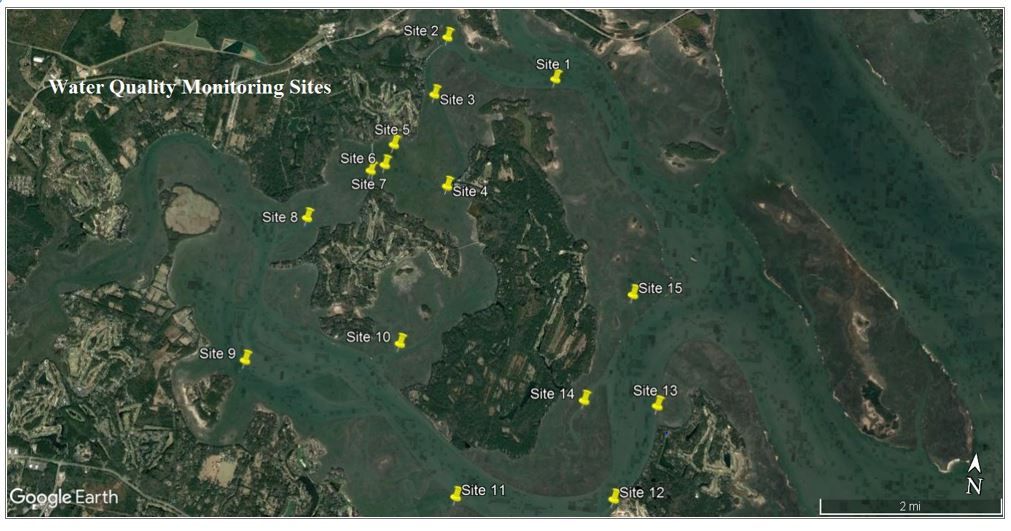Research and Conservation
Water Quality
Fipronil is a pesticide of special concern because it kills crustacean larvae at extremely low concentrations (parts per million) and is commonly used on golf courses to control mole crickets.
In 2007 the LowCountry Institute provided a grant to Dr. Alan Warren of the University of South Carolina-Beaufort to study if fipronil was being carried from a golf course into the adjacent salt marsh by stormwater runoff. The golf course applied fipronil following the restrictions required by EPA. Later Dr. Warren tested to see if fipronil was present in salt marsh sediments where outfalls from a local golf course emptied into the marsh. Fipronil was not detected in soil or water samples at the locations tested.
This study indicated that most of the fipronil, when applied properly, remains in the soil where it was applied. However, the minimum detection limit for some of the laboratory tests was above the threshold at which the chemical would have biological impacts, and fipronil is a long-lasting compound so long-term monitoring for this class of compound is advisable.
Enterococcus Bacteria
The LowCountry Institute's most recent water quality study was completed in August 2019 and focused on enterococcus bacteria in the region's tidal creeks (see sampling sites above). Enterococcus bacteria normally inhabit the intestinal tracts of humans and other animals and its presence in a water body is an indication of fecal pollution, which may come from stormwater runoff, pets and wildlife, and human sewage. Enterococcus bacteria have a strong association with swimming-related gastrointestinal illness in saltwater in particular, and high levels can result in closure of swimming, boating, fishing, and shellfishing in a water body.
After a preliminary sampling, Dr. Warren found that water in the creeks and rivers surrounding Spring and Callawassie Islands was of good quality and safe for recreation. Dr. Warren sampled each location twice – once during an incoming tide and once during an outgoing tide. The sampling results revealed that all sites had either no quantifiable Enterococcus bacteria or low concentrations relative to regulatory standards. Good news indeed! These data will serve as a baseline for an expanded study.

Copyright © Spring Island Trust
40 Mobley Oaks Ln. · Okatie, SC 29909 · 843-987-7008
Site by Sans Sheriff Studio

